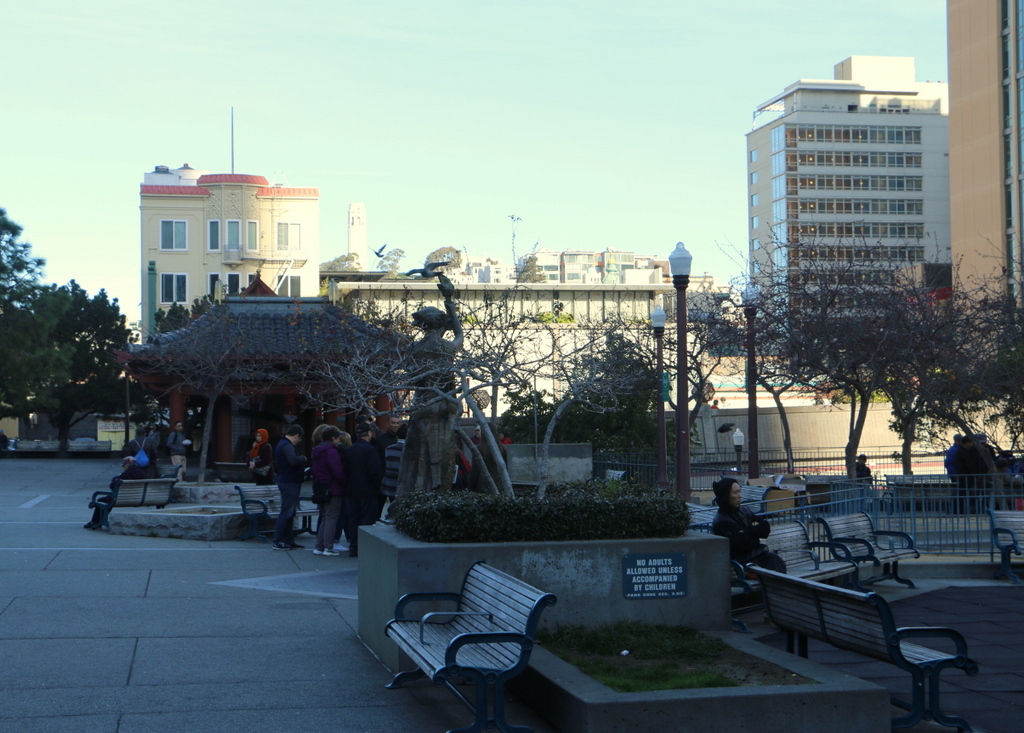The view of Portsmouth Square in San Francisco, with Telegraph Hill in the distance, in January 1851. Image courtesy of the Library of Congress, Daguerreotypes Collection.
Portsmouth Square in 2015:

When the first photo was taken in January 1851, San Francisco was in the middle of a massive population boom spurred by the California Gold Rush. Just a few years earlier, it had been a small Mexican village of several hundred inhabitants, and was named Yerba Buena. In 1846, during the Mexican-American War, the USS Portsmouth arrived to claim the settlement for the United States, and the sailors raised an American flag here at what is now called Portsmouth Square. The following year, Yerba Buena was renamed San Francisco, and in 1848 California officially became part of the United States.
At the time, there were about a thousand residents in San Francisco, but this figure grew exponentially as gold seekers poured into the city from around the world. Portsmouth Square was at the center of much of this activity, and the foreground of the 1851 scene shows a variety of businesses here. On the far left is the California Restaurant, and next to it is the Alta California, a newspaper that, about 15 years later, employed a young journalist with the pen name of Mark Twain. Further to the right are some of the seedier elements of the city, reflective of its “wild west” days during the Gold Rush. The three buildings to the right were, from left to right, the Louisiana, the Bella Union, and the Sociedad, all of which were saloons and gambling houses that sought to liberate the newly-wealthy gold miners of their money.
In the distance of the first photo is Telegraph Hill, one of the city’s many hills. It was still sparsely populated when the first photo was taken, but at the top of the hill is a semaphore station that had been built in 1849. This semaphore telegraph, as it was known as, had a tower with arms that could be raised or lowered to visually communicate messages, giving the hill its name. From here, the operator could view ships passing through Golden Gate and could signal information to the city about its port of origin, cargo, and any important news.
Today, nothing is left from the original photo. Anything that was still standing 55 years later would have been destroyed in the 1906 earthquake, when fires swept across much of the city, including Portsmouth Square and parts of Telegraph Hill. Portsmouth Square is now a public park at the center of San Francisco’s Chinatown neighborhood, as seen in the foreground of the 2015 photo. In the distance, Telegraph Hill is mostly hidden from view, but some of the buildings are visible, including the Coit Tower, which was built in 1933 on the site of the old semaphore telegraph.
This post is part of a series of photos that I took in California this past winter. Click here to see the other posts in the “Lost New England Goes West” series.

